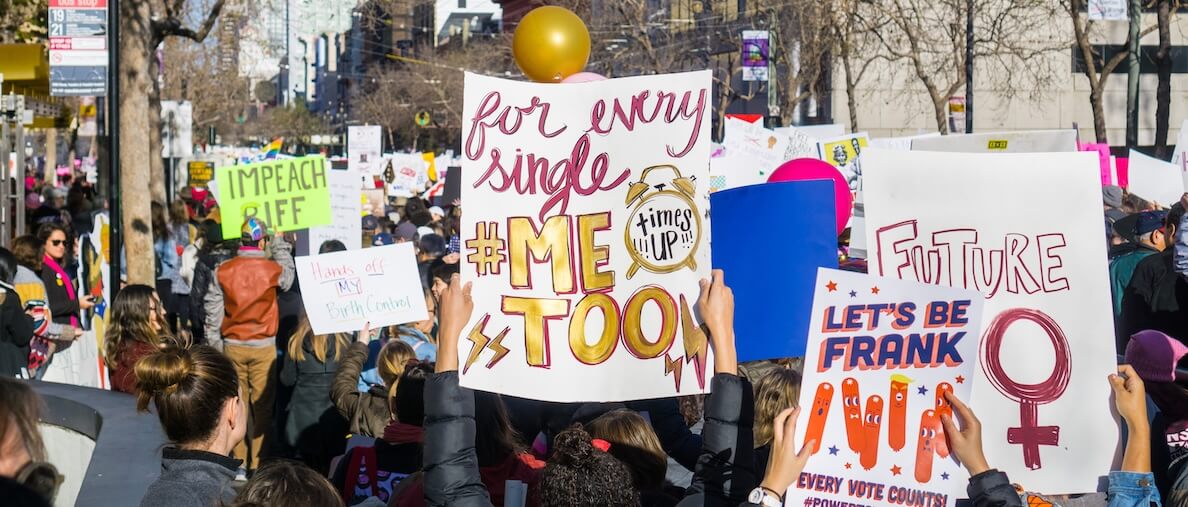

Body Politic
Was the #MeToo Backlash Inevitable?
Sex pests called out during #MeToo are being absolved and are trickling back into the spotlight. But the massive movement’s mission—to out and oust powerful abusers—proved to be unsustainable. Here’s what should have happened.
This article was made possible because of the generous support of DAME members. We urgently need your help to keep publishing. Will you contribute just $5 a month to support our journalism?
Over the past few years, there have been stirrings of a “MeToo backlash.” Not even a decade after hundreds of accused abusers and rapists were ousted from positions of power, one-time pariahs have been creeping back into the spotlight, sometimes for accolades, other times for outright revenge. Kevin Spacey received an award at Cannes. Johnny Depp won a defamation trial against his ex-wife, Amber Heard. And, of course, Donald Trump, whose initial rise to power has been credited with sparking the fuse that made MeToo go global, is back in office, with multiple accused abusers joining him in his cabinet.
For many feminists, the rapid shift from believing survivors to backing abusers has felt jarring. At best, it makes the global infatuation with survivor justice feel like a passing fad, no more deeply valued than NFTs or Clubhouse (remember Clubhouse?). At worst, it can feel far more sinister, as though MeToo was some intentional plot to toy with the emotions of survivors, to encourage us to make ourselves vulnerable through public admissions only to rip away our sense of support and safety in short order.
But I would offer that the problem with MeToo, the reason such a massive movement was able to seemingly completely collapse in barely five years, was something far more nuanced and subtle. The mission statement that brought many people together under the MeToo banner—outing, and ousting, powerful abusers and rapists—was never a sustainable one. Furthermore, it was one of the least viable strategies for creating lasting change for victims and survivors of abuse, assault, and harassment.
I should note here that the MeToo I am talking about might better be referred to as #MeToo, a celebrity-, social media-, and journalist-driven movement that collectively worked to bring down hundreds of powerful people, primarily men, in the name of ending abuse. Because that movement, the one that caught so many people’s attention, is actually very different from the “me too.” movement, the survivor-led organization founded by Tarana Burke in 2006. Scrolling through the me too website, you won’t find breathless counts of all the men brought down by MeToo, or wide-eyed stories about the latest celebrities and prominent names who’ve been outed for their histories of abuse.
Instead, you’ll find documents like the “me too.” Theory of Change, which calls for things like “survivor-led healing circles” and “survivor leadership training”—programs that, while not quite incompatible with outing abusers, are hardly focused on that mission. The “me too.” action that Burke has been calling for for nearly two decades has never been primarily about call-outs or torpedoing careers. At its heart, it’s been about connecting survivors with the resources needed to heal from abuse, and to live happy, fulfilling lives in spite of the people who’ve caused them harm.
If you’ve never worked directly with survivors, this may feel like a distinction without a difference. How could Harvey Weinstein’s victims find healing or success while he loomed large over the entertainment industry? How can survivors be expected to thrive when a serial abuser who’s been found liable for sexual assault by a court resides in the White House? And it is absolutely true that allowing known abusers to remain in power—let alone actively elevating them to even higher offices—creates an unsafe environment and tacit acceptance of abuse.
But outing abusers—especially ones who aren’t big-name celebrities—is something of a game of whack-a-mole. Nearly eight years after MeToo, prominent predators are still being outed; there’s no literal evidence that removing one cadre of celebrity abusers has prevented another from rising to take their place. And even in the best of circumstances, victories are often short-lived and far from durable. A rapist may go to prison, but they’re unlikely to stay there forever (nor should they — though that’s a topic for different discussion on criminal justice reform). And as the rising support for men like Johnny Depp—once deemed by U.K. courts to be credibly considered “wife beater”—makes clear, time has a way of softening people’s hearts and shifting common understandings of the facts in ways that often aren’t in a survivors’ best interest.
On a fundamental level, tying survivor well-being and mental health to the fate of their abusers is a fraught venture at best. And as the #MeToo Movement recedes further and further into history, it is tempting to ask where we might be now if the global energy had aligned, not so much behind taking down powerful abusers, but behind building up survivors. What if the global #MeToo movement had felt more like a global ‘me too.’ Movement?
I can offer some idea: In October 2018, a little over a year after Harvey Weinstein was outed in the pages of The New York Times, I joined a group of nearly 100 people in an auditorium at New York’s Mt. Sinai Morningside Hospital. Over the course of 40 hours, my colleagues and I trained to become volunteer rape crisis/domestic violence counselors—a position I still hold with pride.
Since that 40-hour training, I’ve shown up for dozens of survivors, calling a car service in the middle of the night to show up for them at a hospital emergency department, or meeting up near a police precinct to accompany them to make a police report. Each survivor is dealing with different challenges and experiences of abuse, but the core of my work always remains the same. As long as I’m with a survivor, they know they have someone who believes them, who cares about them, and who, most importantly of all, trusts them to make a decision that’s the right one for them. Rather than taking down the person who hurt them, I’m there to help the survivor rebuild their sense of safety, bodily autonomy, and, most importantly of all, confidence in their ability to make their own decisions and enforce their own boundaries.
At the end of my time with the survivor, they’re referred to the organization that trained me, which offers a range of survivor-focused services, including therapy, legal support, and acupuncture, all for free, and continues with them on their healing journey. Some of the survivors I’ve met up with have pursued legal action against their abusers. Others choose not to. However they decide to handle that complicated decision, they are always provided with the same level of care, affirmation, and support. And as survivors, they are guaranteed a place within a community that shows up for them, helps them get back on their feet, and doesn’t abandon them even when things get hard. To me, that feels far more durable than ensuring that abusers stay out of power, or are denied awards, for the rest of eternity. To me, providing the support and resources that survivors need to thrive in the wake of abuse feels like the kind of work that deserves a lot more attention and focus from the world at large.
Before you go, we hope you’ll consider supporting DAME’s journalism.
Today, just tiny number of corporations and billionaire owners are in control the news we watch and read. That influence shapes our culture and our understanding of the world. But at DAME, we serve as a counterbalance by doing things differently. We’re reader funded, which means our only agenda is to serve our readers. No both sides, no false equivalencies, no billionaire interests. Just our mission to publish the information and reporting that help you navigate the most complex issues we face.
But to keep publishing, stay independent and paywall free for all, we urgently need more support. During our Spring Membership drive, we hope you’ll join the community helping to build a more equitable media landscape with a monthly membership of just $5.00 per month or one-time gift in any amount.




















































































